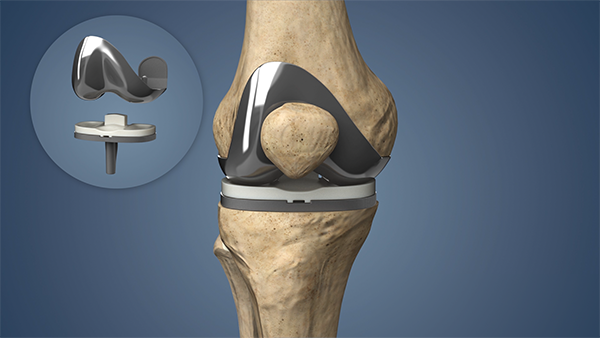Partial and total joint replacement procedures are both common orthopedic surgeries aimed at treating severe joint arthritis or joint damage. Here’s a breakdown of the differences between these two types of procedures:
Partial Joint Replacement:
- Definition: A partial joint replacement, also known as unicompartmental joint replacement, involves replacing only one part of a joint that is damaged or affected by arthritis. It is typically performed when the damage is limited to one compartment of the joint, while the rest of the joint remains healthy.
- Indications: It is most commonly performed on the knee joint, where either the medial (inner) or lateral (outer) compartment of the knee is affected by arthritis. In some cases, partial replacement can also be considered for the hip joint (unipolar hip replacement).
- Procedure: During a partial knee replacement, the orthopedic surgeon removes the damaged portion of the joint surfaces and replaces it with a prosthetic component made of metal or plastic. This preserves the healthy parts of the joint and maintains ligaments, which can help retain natural joint movement and stability.
- Advantages:
- Smaller incision and less disruption of surrounding tissues compared to total joint replacement.
- Potentially faster recovery time and less post-operative pain.
- Retention of natural joint anatomy, which can lead to more normal feeling and functioning of the joint.
5. Considerations: Partial joint replacement is suitable for patients with localized arthritis and intact ligaments. It may not be appropriate if arthritis affects multiple compartments of the joint or if ligament instability is present.
Total Joint Replacement:
- Definition: Total joint replacement, also known as arthroplasty, involves replacing the entire damaged or arthritic joint with a prosthetic implant. This procedure is typically performed when arthritis affects the entire joint or when other treatments have been ineffective in providing relief.
- Indications: Total joint replacements are most commonly performed for the hip and knee joints but can also be done for joints like the shoulder, elbow, and ankle. It is chosen when the joint is severely damaged, causing significant pain, stiffness, and functional limitations.
- Procedure: During a total joint replacement, the orthopedic surgeon removes the damaged bone and cartilage surfaces of the joint and replaces them with prosthetic components made of metal, plastic, or ceramic materials. The artificial joint mimics the natural joint’s shape and function, providing smooth movement and reducing pain.
- Advantages:
- Effective relief of severe joint pain and improvement in joint function.
- Suitable for advanced arthritis or joint damage affecting multiple parts of the joint.
- Long-term durability and success in restoring joint mobility and quality of life.
5. Considerations: Total joint replacement requires a larger incision and more extensive surgical approach compared to partial joint replacement. Recovery may take longer, and rehabilitation is essential to regain strength, flexibility, and joint function.
Conclusion:
In summary, the main difference between partial and total joint replacement procedures lies in the extent of joint involvement and the surgical approach. Partial joint replacement targets specific compartments of the joint affected by arthritis, preserving healthy tissues and ligaments. Total joint replacement, on the other hand, replaces the entire joint surface with artificial components, providing comprehensive relief for advanced arthritis affecting the entire joint. Both procedures have their indications and benefits, tailored to the individual patient’s condition and goals for joint function and pain relief.






Comments